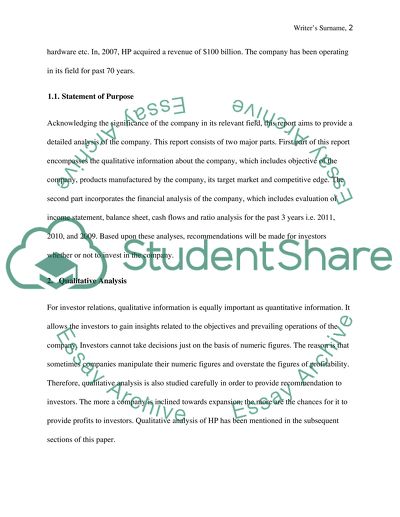Cite this document
(“Fundamental Analysis of Hewlett Packard Essay Example | Topics and Well Written Essays - 3500 words”, n.d.)
Fundamental Analysis of Hewlett Packard Essay Example | Topics and Well Written Essays - 3500 words. Retrieved from https://studentshare.org/marketing/1403080-fundamental-analysis-of-hewlett-packard
Fundamental Analysis of Hewlett Packard Essay Example | Topics and Well Written Essays - 3500 words. Retrieved from https://studentshare.org/marketing/1403080-fundamental-analysis-of-hewlett-packard
(Fundamental Analysis of Hewlett Packard Essay Example | Topics and Well Written Essays - 3500 Words)
Fundamental Analysis of Hewlett Packard Essay Example | Topics and Well Written Essays - 3500 Words. https://studentshare.org/marketing/1403080-fundamental-analysis-of-hewlett-packard.
Fundamental Analysis of Hewlett Packard Essay Example | Topics and Well Written Essays - 3500 Words. https://studentshare.org/marketing/1403080-fundamental-analysis-of-hewlett-packard.
“Fundamental Analysis of Hewlett Packard Essay Example | Topics and Well Written Essays - 3500 Words”, n.d. https://studentshare.org/marketing/1403080-fundamental-analysis-of-hewlett-packard.


